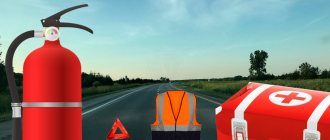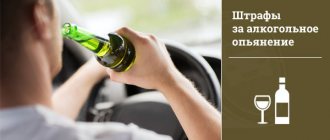Permille: what is it?
Permille is one thousandth of the content of a substance in something.
Therefore, the answer to the question, 1 ppm is how much alcohol, is quite easy to obtain: 1 liter of blood contains 1 g of ethanol.
When drinking drinks of different strengths, you should calculate this indicator, since it will vary. For example, 1 ppm - how much vodka? It is important to take into account the person’s weight and gender. The percentage of fluid in a man's body is 70, in women - 60. The average weight of a man is about 70-75 kg. So, after 100 g of vodka, that is, 40 g of alcohol, the alcohol level will be 0.55 ppm.
What does ppm mean?
The designation “ppm” means thousandth part. The use of this term is due to the fact that it is extremely inconvenient to use percentages to measure additional suspensions contained in a liquid. To understand further calculations, it should be said that one percent is equal to 10 ppm . Moreover, one ppm is the 10th part of a percent.
This unit of measurement is needed to determine the concentration of alcohol-containing liquids in the blood. It should be noted that ppm has one interesting nuance regarding the difference between the sexes. In women, ppm accumulate an order of magnitude faster than in men.
Permille and car driver
If the alcohol content exceeds 0.3-0.6‰, the driver is considered to be drunk. An error in the dose is needed for people who do not drink, but take medications, have specific gastrointestinal diseases, and those who consume some of the products described above.
If the driver’s drunken state is confirmed, sanctions are immediately applied to him: if the violation is the first, then it is a fine of 30,000 rubles and deprivation of rights for a period of 1.5-2 years; if the violation is repeated, more stringent measures follow.
Norm of alcohol in exhaled air in 2021
From July 3, 2021, the note to Article 12.8 of the Code of Administrative Offenses is as follows:
Note. The use of substances that cause alcohol or drug intoxication, or psychotropic or other intoxicating substances is prohibited. Administrative liability provided for by this article and part 3 of article 12.27 of this Code occurs in the event of an established fact of consumption of substances that cause alcohol intoxication, which is determined by the presence of absolute ethyl alcohol in a concentration exceeding the possible total measurement error, namely 0.16 milligrams per liter of exhaled breath. air, or the presence of absolute ethyl alcohol in a concentration of 0.3 or more grams per liter of blood, or in the case of the presence of narcotic drugs or psychotropic substances in the human body.
The permissible alcohol limit is:
- 0.16 mgl or 0.356 ppm - in the driver’s exhaled air;
- 0.3 ppm or 0.135 mgl - in the blood.
In 2021 the values are very similar to those that applied before 2010 (discussed below). The only exception is that the standard for exhaled air has become more flexible for drivers, but the change is minimal (from 0.15 mgl to 0.16 mgl).
The legislative framework
There are a number of legal acts that traffic police officers and drivers are guided by:
- Federal Law No. 528 – changes in legislative acts on increasing driver responsibility.
- Federal Law No. 63 is stated in the Criminal Code of the Russian Federation.
- Decree of the Government of the Russian Federation No. 1090, establishing traffic rules.
- Federal Law No. 195 is spelled out in the Code of Administrative Offences.
Violation of current legislative norms leads to administrative or criminal liability in the form of fines, deprivation of a driver's license, and imprisonment. In 2021, bills are being considered that could increase the punishment.
Refusal to undergo a medical examination is equivalent to an admission of guilt and, therefore, entails punishment.
How is it measured?
To calculate the number of ppm in a driver’s blood, traffic police representatives resort to two methods:
- express analysis using breathalyzers - detectors that respond to the permissible level of alcohol in the exhaled air mixture;
- laboratory examination of blood samples in a medical institution.
The driver has the right to contact a traffic police officer for a referral for a blood test if he does not agree with the result of the detector test.
Blood tests
To determine the blood alcohol content of a driver driving a car, in ppm, you must contact a specialized medical institution that has a license for this type of activity. The motorist must be accompanied to the laboratory by a traffic police representative. In addition to blood, analysis is also carried out for urine. The motorist is allowed to undergo a similar examination again in an independent clinic before five hours have passed from the time of the initial examination.
Exhaled breath analysis
The legal limit of alcohol in exhaled air is twice the limit for blood tests. The measuring device is equipped with a disposable mouthpiece that must be replaced after each use.
The degree of permissible error of a detector that determines the alcohol content in exhaled air and used by a traffic police officer should not exceed five hundredths of a percent.
A control measurement is first carried out with clean air. If the result turns out to be different from zero, the driver has the right to challenge the authenticity of the examination.
Stages of intoxication and their manifestations
- Mild degree – 0.5-1.5‰. Feeling of discomfort, mild disturbances in speech and motor functions. Excitement, partial loss of self-control.
- The average degree is 1.5-2.5‰. Decreased activity, monotonous speech, dulled sense of danger, and significantly impaired coordination of movements.
- Strong degree – 2.5-3‰. Inadequacy of behavior and assessment of the situation, severe disturbances in the process of perception and coordination. Severe intoxication.
- The stage of complete poisoning is more than 3‰. It is possible to completely disable the speech function and lose memory. Coma-like state. Severe intoxication. Up to 0.5% intoxication is considered insignificant; alcohol has minimal impact on a person.
Signs of alcohol intoxication
A traffic police officer can start checking a driver for alcohol if he has suspicions. It includes:
- Analysis of external symptoms;
- Test using a breathalyzer;
- Medical examination of blood and urine.
External signs and behavior indicating intoxication:
- Persistent odor of alcohol in a car or coming from a person;
- Unnatural posture, unsteadiness of gait, tremor;
- Inappropriate behavior with elements of aggression or increased sociability;
- Incoherent speech, difficulties in pronunciation, meaninglessness of spoken words;
- Pupil dilation;
- Characteristic redness or paleness of the skin.
If the described signs are present, the inspector may oblige the driver to undergo an examination. Otherwise, coercion is illegal.
What is ppm called?
Promille is a mark of alcohol concentration, translated from Latin as “thousandth part”. The unit of measurement is percentage.
Note! One percent ppm equals 0.45 milligrams of alcohol per liter of blood.
When calculating the permissible dose of alcohol, the percentage of its breakdown products in the composition is taken into account:
- blood;
- genitourinary discharge;
- air exhaled from the lungs.
According to the requirements of the legislation in force until 2013, a zero value of permissible ppm standards was established. But the previous provisions did not take into account that the analysis, in fact, will be positive if the driver consumes the following “neutral” products before the trip, causing the alcohol concentration level to be exceeded on the exhale:
- kvass, fermented milk drinks;
- non-alcoholic beer;
- citrus fruits or overripe bananas;
- chocolate products;
- sandwiches with wheat bread and sausage.
A similar result is possible when using certain medications, mouth fresheners, and cigarettes. Another option for deviation from a zero result is the presence of endogenous alcohol in the blood, which is naturally formed during the decomposition of glucose and does not indicate intoxication.
The above will cause a short-term effect similar to intoxication as measured by a breathalyzer. But this is enough for lengthy proceedings that threaten a serious fine from the traffic police.
In other countries, legislation allows a certain percentage of ppm that does not have a significant effect on human physiological functions. Taking into account this experience, after 2013, standards were introduced that allowed the permille indicator for drivers to deviate in a positive direction from the zero value.
Alcohol elimination process
The highest concentration of alcohol occurs after 30 minutes of drinking alcohol, and then begins to gradually decrease. The withdrawal time is quite long and depends on many parameters:
- gender: men's blood clears faster. The average man loses 0.10 - 0.15 ‰ per hour, and a woman - a maximum of 0.10 ‰.
- type of alcohol: it takes more time to cleanse yourself from vodka, cognac or other strong drinks.
- Weight: For heavier people it takes less time.
You can speed up the process of removing alcohol from the body by resorting to physical exercise, water treatments and drinking plenty of fluids.
Important! There is no absolutely safe dose of alcohol after which you can immediately get behind the wheel.
Blood alcohol ppm table (mg/l)
The amount of permissible blood alcohol content is determined on the basis of tables, on the basis of which it is easy to determine how much alcohol you can drink, taking into account the norm of 0.16 ppm. These tables are provided below in the appropriate sections.
What proportion of ethyl alcohol is contained in human blood (concentration)
By default, human blood contains a certain proportion of ethyl alcohol. During the metabolic process, the system produces ethyl alcohol, which appears in the cells.
For this reason, it is present in the body, even if the person has not drunk alcohol at all. This phenomenon is designated “endogenous alcohol.”
As such, by definition, it is customary to consider only alcohol that is synthesized in the process of biochemical reactions.
The highest concentration of this substance is in the liver, but such ethanol is also present in all other organs, as well as human tissues.
In addition, there is the possibility of alcohol synthesis in the human digestive system. In this variant, food (carbohydrates) that does not contain ethanol enters his stomach, and then it is formed in this organ.
Such ethyl alcohol is not considered to be an unconditionally endogenous alcohol, since it appears as a result of the processing of products consumed by humans.
Nevertheless, it can be conditionally combined with alcohol synthesized in cells, also designated as endogenous.
Moreover, the volume of ethanol produced from food entering the body, which itself does not contain food, significantly exceeds the volume of ethanol produced in the tissues.
At the same time, it is certainly inferior in volume to any amount of alcohol that enters the body when drinking alcoholic beverages.
Endogenous ethanol is called live or real. At the same time, this compound does not accumulate in the body; as much living ethanol is synthesized in it, so much is then excreted.
The amount of alcohol produced naturally does not depend on a person’s gender. In women, as in men, it is produced in a completely identical way.
By default, the amount of endogenous alcohol in a person's blood ranges from 0.06 to 0.12 ppm.
This figure is somewhat inferior to the error indicators of standard breathalyzers, since it is at the level of 0.16 ppm. As a result, such a device simply does not recognize the presence of alcohol in the body.
It is worth remembering that a number of diseases lead to an increase in the level of endogenous alcohol in a person’s blood.
In particular, this is facilitated by kidney and liver diseases, nervous system disorders, diabetes mellitus, and chronic obstructive bronchitis.
Of course, alcohol entering through the gastrointestinal tract poses a more significant risk.
Thus, non-alcoholic beer, despite the name, will bring the blood alcohol level to the level of 0.1–0.4 ppm.
Kefir also contains a certain amount of ethyl alcohol, but its volume is not large enough. On the other hand, curdled milk increases the concentration by 0.2 ppm.
In fact, kumys, which is an alcoholic drink, will bring it to a value of 0.4 ppm, which is already higher than the permitted levels.
Nevertheless, the main share of alcohol enters the human bloodstream precisely when drinking alcoholic beverages.
Therefore, to eliminate any risk, it is recommended to drive only 24 hours after your last drink.
It must be borne in mind that, having already drunk several sips of beer, a person, when examined with a breathalyzer, can receive a result of 0.3 ppm, although formally the volume of beer in these few sips does not contain an unacceptable level of alcohol.
When determining the amount of alcohol in the blood, you need to remember that not all alcohol gets into the blood, since food is not absorbed by the human body in a 100% volume.
In men
The blood alcohol content in men after drinking alcoholic beverages is determined by the number of drinks consumed and the weight of the man himself.
In this case, the following portions are taken as a dose in the table below:
| 50 grams for all drinks | The strength of which is forty degrees, including for vodka and cognac, as well as whiskey |
| 100g | For a drink with a strength of 20 degrees, for example, port wine |
| 150 grams | For dry wine with a strength of 12 degrees |
| 0.25 liters or half a can | For tonic, the strength of which is 9 degrees |
| Half liter or regular bottle or jar | For beer with 4% ethanol content |
All of the above drinks contain approximately equal alcohol content and can be considered interchangeably.
Based on this information and the table below, you can answer the question “0.3 is how many milliliters of vodka or beer?”
Photo: blood alcohol concentration in men
It is worth keeping in mind that within an hour the proportion of ethanol in the blood drops by 0.15 ppm, so to roughly determine how much alcohol will be in the body in an hour, you need to subtract this value from the table.
Lethal dose of alcohol
It is generally accepted that 5‰ is already a lethal dose. However, modern data show that there are drivers who show results at both 6 and 7 ppm.
Even doctors find it difficult to name the exact “dose of death.” After all, it depends not only on the volume of alcohol consumed, but also on the type of alcoholic drink, the person’s health status, lifestyle, and his metric indicators (height, weight). Therefore, you should not rely on averages and “play” with the amount of alcohol.
Carefully! Alcohol kills
Alcohol abuse is dangerous in itself: prolonged and regular excess of adequate doses of alcohol leads to the development of alcohol dependence. It is difficult to treat, leads to a lot of side diseases, and in advanced cases – to death.
Another danger is driving while intoxicated. Such irresponsible behavior threatens the lives of the driver, passengers and other road users. When drunk, quarrels begin that turn into fights and other dangerous incidents; Problems with the law are also common.
If you find an error, please select a piece of text and press Ctrl+Enter.










